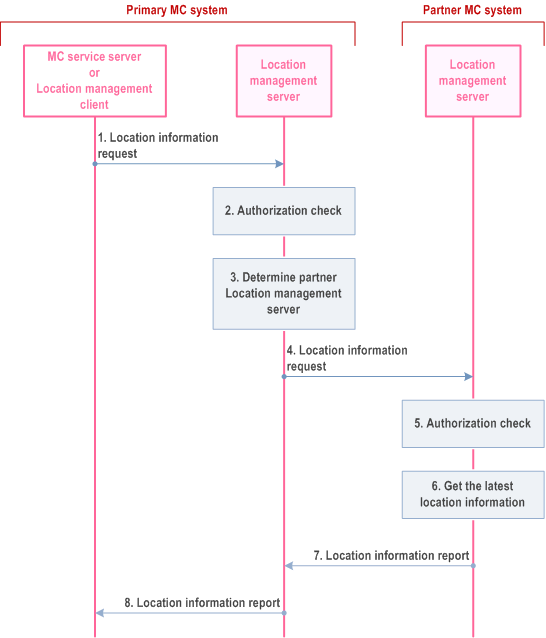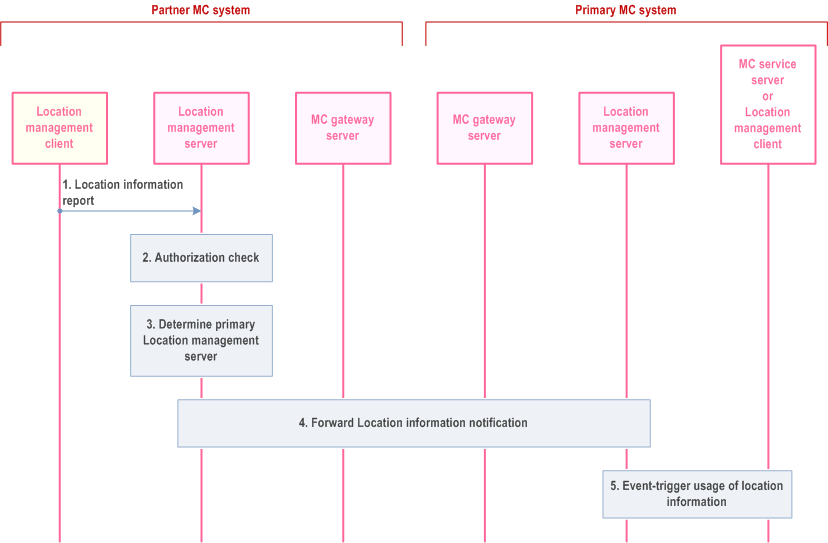Content for TS 23.280 Word version: 19.3.1
1…
5…
5.2.8…
6
7…
7.3.2
7.4…
7.4.3…
7.5…
8…
9…
9.2.2…
9.2.2.2…
9.3…
10…
10.1.2…
10.1.3…
10.1.4.3…
10.1.4.5…
10.1.5…
10.1.6…
10.2…
10.2.3…
10.2.4.2…
10.2.4.3…
10.2.5…
10.2.7…
10.3…
10.6…
10.7…
10.7.3…
10.7.3.4…
10.7.3.7…
10.7.3.7.3
10.7.3.8…
10.7.3.10…
10.8…
10.8.4…
10.8.5…
10.9…
10.9.3…
10.9.3.5…
10.9.3.8…
10.9.3.9…
10.9.3.9.3…
10.9.3.9.4…
10.9.3.10…
10.9.3.10.4…
10.9.3.10.6…
10.10…
10.10.1.2.3…
10.10.2…
10.10.3…
10.10.3.3…
10.10.3.4…
10.11…
10.11.5…
10.12…
10.13…
10.13.3…
10.13.7…
10.13.10…
10.14…
10.15…
10.15.3…
10.15.3.3…
10.15.3.4…
10.16…
10.17…
10.17.3…
10.17.5…
11…
11.3…
11.5…
11.5.2…
11.5.3…
11.5.3.3.2A…
A…
B…
C…
E…
10.9.3.10 Usage of location information across MC systems procedure
10.9.3.10.1 General
10.9.3.10.2 On-demand request of location information procedure
10.9.3.10.3 Event-triggered location information notification procedure
...
...
10.9.3.10 Usage of location information across MC systems procedure |R18| p. 211
10.9.3.10.1 General p. 211
Interconnected MC systems in either the same security domain or different security domains share location information either through the direct connection of the location management servers or through the connected MC gateway servers.
10.9.3.10.2 On-demand request of location information procedure p. 211
The MC service server or location management client in the primary MC system can request MC service user's location information, which is in the partner MC system, at any time by sending a location information request to the location management server at primary MC system.
Figure 10.9.3.10.2-1 illustrates the high level procedure of on-demand request of location information.

Step 1.
The MC service server or a location management client in the primary MC system requests on-demand location information of MC service user located in the partner MC system.
Step 2.
The location management server in the primary MC system checks if the provided information along with the configuration permit the request to proceed.
Step 3.
The location management server in the primary MC system determines that the request has a target in a different MC system.
Step 4.
The location management server in the primary MC system sends the on-demand location information request to the location management server in the partner MC system.
Step 5.
The location management server in the partner MC system checks if the provided information along with the configuration permit the request to proceed.
Step 6.
The location management server at partner MC system updates the location information, according to the procedure described in clause 10.9.3.2 or provides stored location information, based on the configuration for on-demand requests.
Step 7.
The location management server in the partner MC system sends the location information report, described in clause 10.9.2.2, to the MC service server in the primary MC system.
Step 8.
If the requesting location information management client is still authorized to receive the location report, the location management server in the primary MC system sends the location information report to the requesting location information management client.
10.9.3.10.3 Event-triggered location information notification procedure p. 212
The location management client in the partner MC system provides, based on configuration, periodic location information, which will be also forwarded to the subscribed entities.
Figure 10.9.3.10.3-1 illustrates the high level procedure of event-triggered sharing of location information.

Step 1.
The location management client in the partner MC system is triggered, based on configuration, to send a location information report, according to described triggers in clause 10.9.3.1.
Step 2.
The location management server in the partner MC system checks if the provided information along with the configuration permit the report to proceed.
Step 3.
The location management server in the partner MC system determines that the report has a target in a different MC system.
Step 4.
The location management server in the partner MC system sends the location information notification to the location management server in the primary MC system, according to the described information flow in clause 10.9.2.7.
Step 5.
The location management server in the primary MC system checks if the location management client is authorized to receive the location information and forwards the received location information, according to the procedure described in clause 10.9.3.6.1.